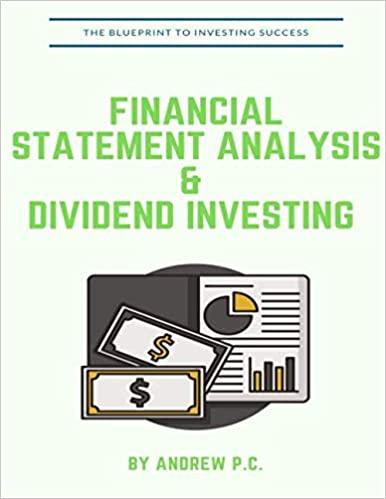Question
*These percentages have been rounded to the nearest whole percent to simplify calculations while retaining realism. To calculate the actual depreciation for tax purposes, be



*These percentages have been rounded to the nearest whole percent to simplify calculations while retaining realism. To calculate the actual depreciation for tax purposes, be sure to apply the actual unrounded percentages or directly apply double-declining balance (200%) depreciation using the half-year convention.







Calculation the cash flows with the new machine and the net incremental cash flows below:






This is only one whole math. I have to get full marks on this. Requesting to do this math carefully and follow this given format, please. Thanks in Advance.
Net cash flows Central Laundry and Cleaners is considering replacing an existing piece of machinery with a more sophisticated machine. The old machine was purchased 3 years ago at a cost of $46,700, and this amount was being depreciated under MACRS using a 5-year recovery period. The machine has 5 years of usable life remaining. The new machine that is being considered costs $76,300 and requires $3,700 in installation costs. The new machine would be depreciated under MACRS using a 5 -year recovery period. The firm can currently sell the old machine for $55,500 without incurring any removal or cleanup costs. The firm is subject to a tax rate of 21%. The revenues and expenses (excluding depreciation and interest) associated with the new and the old machines for the next 5 years are given in the table. (Table contains the applicable MACRS depreciation percentages.) Note: The new machine will have no terminal value at the end of 5 years. a. Calculate the initial cash flow associated with replacement of the old machine by the new one. b. Determine the periodic cash flows associated with the proposed replacement. (Note: Be sure to consider the depreciation in year 6 .) c. Depict on a time line the net cash flows found in parts (a) and (b) associated with the proposed replacement decision. Data table (Click on the icon here in order to copy the contents of the data table below into a spreadsheet.) Rounded Depreciation Percentages by Recovery Year Using MACRS for First Four Property Classes a. Calculate the initial cash flow associated with replacement of the old machine by the new one. Calculate the initial cash flow below: (Round to the nearest dollar.) b. Determine the periodic cash flows associated with the proposed replacement. (Note: Be sure to consider the depreciation in year 6 .) Calculate the cash flows with the old machine below: (Round to the nearest dollar.) \begin{tabular}{ll|} \multicolumn{1}{c}{ Year } & 2 \\ \hline Profit before depreciation and taxes & $ \\ Depreciation & $ \\ Net profit before taxes & \\ Taxes & $ \\ Net profit after taxes & $ \\ Operating cash inflows & $ \\ \hline \end{tabular} \begin{tabular}{ll|} \multicolumn{1}{c}{ Year } & \multicolumn{1}{|}{$} \\ \hline Profit before depreciation and taxes & \\ Depreciation & $ \\ Net profit before taxes & $ \\ Taxes & $ \\ Net profit after taxes & $ \\ Operating cash inflows & $ \end{tabular} (Round to the nearest dollar.) (Round to the nearest dollar.) ( (Round to the nearest dollar.) (Round to the nearest dollar.) Calculation the cash flows with the new machine and the net incremental cash flows below: (Round to the nearest dollar.) (Round to the nearest dollar.) (Round to the nearest dollar.) \begin{tabular}{ll|} \multicolumn{1}{c}{ Year } \\ \hline Profit before depreciation and taxes \\ Depreciation & \\ Net profit before taxes & \\ Taxes & \\ Net profit after taxes & \\ Operating cash inflows & \\ Incremental cash flows \end{tabular} (Round to the nearest dollar.) \begin{tabular}{ll|} \multicolumn{1}{c}{ Year } & 5 \\ \hline Profit before depreciation and taxes & $ \\ Depreciation & $ \\ Net profit before taxes & \\ Taxes & \\ Net profit after taxes & \\ Operating cash inflows & $ \\ Incremental cash flows & $ \\ \hline \end{tabular} \begin{tabular}{ll|} \multicolumn{1}{c}{ Year } & \multicolumn{2}{|}{} \\ \hline Profit before depreciation and taxes & \\ Depreciation & \\ Net profit before taxes & \\ Taxes & \\ Net profit after taxes & \\ Operating cash inflows & \\ Incremental cash flows \end{tabular} c. Depict on a time line the net cash flows found in parts (a) and (b) associated with the proposed replacement decision. The time line for the net incremental cash flows is shown below: (Select the best choice below.)
Step by Step Solution
There are 3 Steps involved in it
Step: 1

Get Instant Access to Expert-Tailored Solutions
See step-by-step solutions with expert insights and AI powered tools for academic success
Step: 2

Step: 3

Ace Your Homework with AI
Get the answers you need in no time with our AI-driven, step-by-step assistance
Get Started


